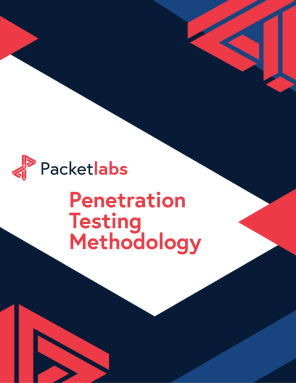Jaguar Land Rover Halts Global Production Amid Major Cyberattack
Would you like to learn more?
Download our Pentest Sourcing Guide to learn everything you need to know to successfully plan, scope, and execute your penetration testing projects.
Jaguar Land Rover (JLR), the iconic automaker under Tata Motors, experienced a severe cyberattack starting late August, which forced a preemptive shutdown of global IT systems.
The disruption brought production to a standstill at major plants, including those in the UK (Solihull, Halewood, Wolverhampton), as well as facilities in Slovakia, China, India, and Brazil. Thousands of employees were sent home, and dealerships were unable to register new vehicles, enforce diagnostics, or process sales despite the company’s consumer-facing website and configurator remaining operational.
This attack coincided with the highly anticipated release of the “75” vehicle registration plates, typically one of the automotive industry's busiest periods. The result was a cascade of operational failure, with dealer networks unable to sell or service vehicles, prompting customer frustration and widespread delays.
Who’s Behind the Attack and What’s at Stake
The perpetrator is a hacker faction calling itself “Scattered Lapsus$ Hunters,” a composite group linked to Scattered Spider, Lapsus$, and ShinyHunters. While JLR hasn’t confirmed the exact nature of the incident—no data theft has been officially reported—experts believe the use of ransomware or double-extortion tactics is likely.
Despite efforts to triage and restore operations, the company warned that the shutdown could last for weeks or even months, projecting ongoing recovery activity through October. The knock-on effects have extended to suppliers like Evtec, WHS Plastics, and others who have also halted operations, exposing how interconnected and fragile automotive supply chains can be in the face of cyber disruption.
An Analysis of Jaguar Land Rover's Initial Cyber Breach Containment Response
JLR’s decision to shut down systems was widely regarded as damage containment best practice. Security experts praised the move for potentially stopping the attacker from spreading further into JLR’s IT-OT ecosystem: a textbook response that aligns with cyber resilience protocols.
However, analysts warn that such a response highlights the absence of preemptive resilience. In environments where IT and operational technology are deeply integrated, a full shutdown is untenable over the long term. The recovery will rely on controlled system reboots, forensic deep-dives, and careful validation.
Why This Attack Matters for the Automotive Industry
Manufacturing is no longer immune to cyber threats. As one industry expert framed it: a single breach in IT can instantly cripple production lines, affecting revenue and customer confidence. Every hour lost represents millions in stalled production and shipment delays, particularly during peak periods.
Other high-profile consumer brands—M&S, Harrods, Co-op, and Pandora—have faced similar disruptions earlier this year. These cascading breaches showcase the systemic risk posed by attacks that exploit vulnerabilities in connected supply chains and legacy infrastructure.
What CISOs Should Do Now
Isolate Critical OT Systems: Segment and harden manufacturing environments
Enforce Forced-Failsafes: Automate system isolation for early containment
Test Incident Recovery Readiness: Simulate cyber shutdowns in IT/OT environments
Strengthen Supply Chain Governance: Use contractual and technical enforceable security controls with suppliers
Build Rapid Threat Response Plans: Draft protocols for executive communication, safe system restores, and forensic validation
Packetlabs: Your Cyber Resilience Partner
As JLR rebuilds, cybersecurity strategy needs a transformation, not just a reboot.
Jaguar Land Rover's breach is a stark warning: downtime, not data, is the most pressing cyber risk for industrialized sectors. Are you ready to protect your production pipeline?
Contact Us
Speak with an Account Executive
Interested in Pentesting?

Penetration Testing Methodology
Our Penetration Security Testing methodology is derived from the SANS Pentest Methodology, the MITRE ATT&CK framework, and the NIST SP800-115 to uncover security gaps.
Download Methodology
Pentest Sourcing Guide
Download our Pentest Sourcing Guide to learn everything you need to know to successfully plan, scope, and execute your penetration testing projects.
Download GuideExplore in-depth resources from our ethical hackers to assist you and your team’s cyber-related decisions.

September 13 - Blog
Why Multi-Factor Authentication is Not Enough
Knowing is half the battle, and the use and abuse of common frameworks shed insight into what defenders need to do to build defense in depth.

November 19 - Blog
The Top Cybersecurity Statistics for 2024
The top cybersecurity statistics for 2024 can help inform your organization's security strategies for 2025 and beyond. Learn more today.

October 24 - Blog
Packetlabs at SecTor 2024
Packetlabs is thrilled to have been a part of SecTor 2024. Learn more about our top takeaway's from this year's Black Hat event.







